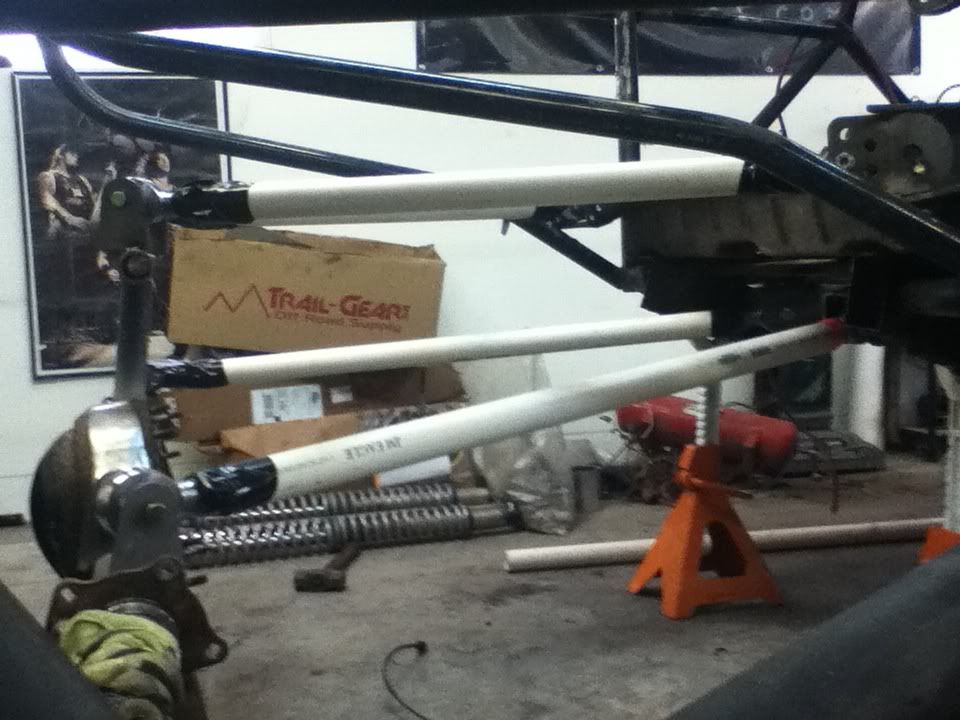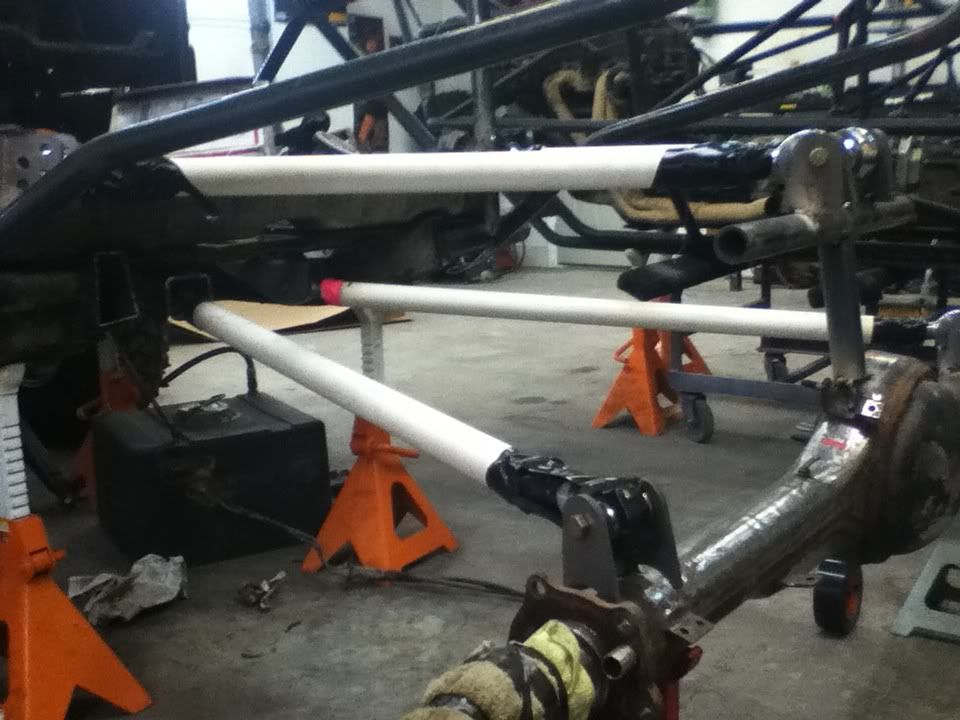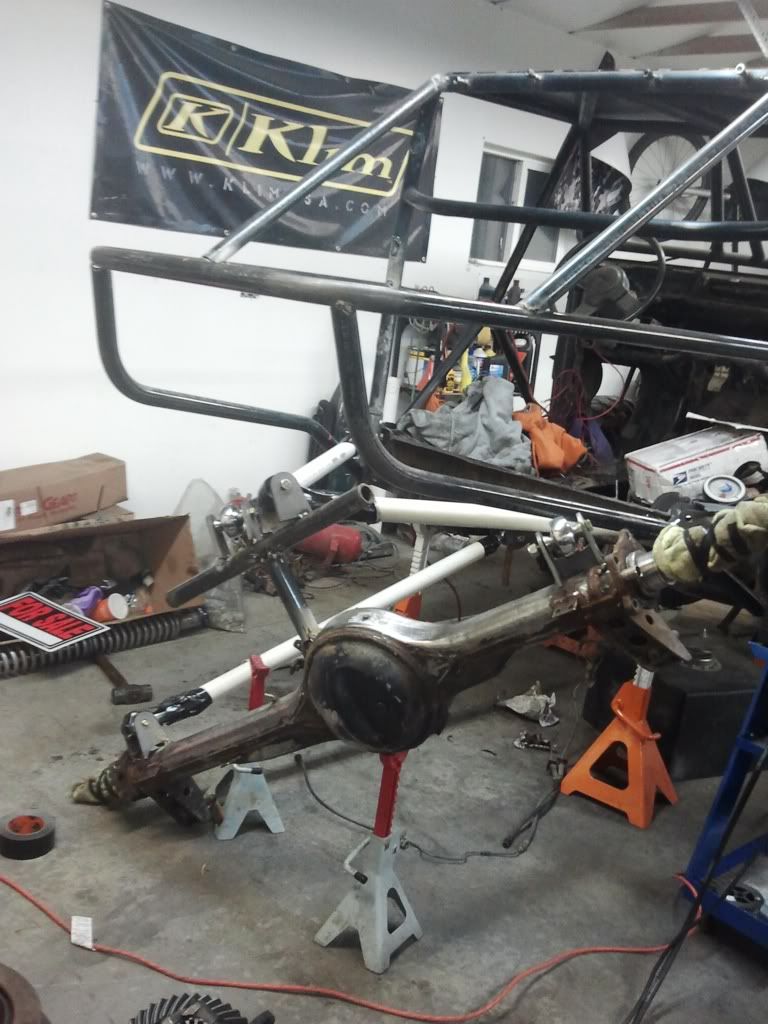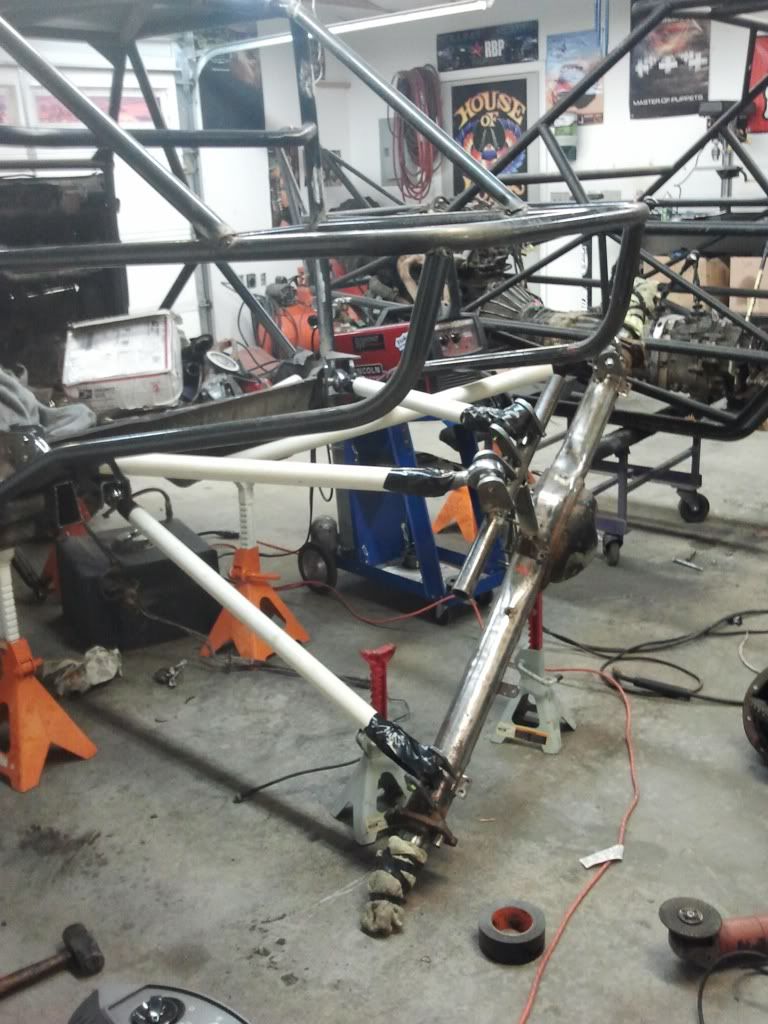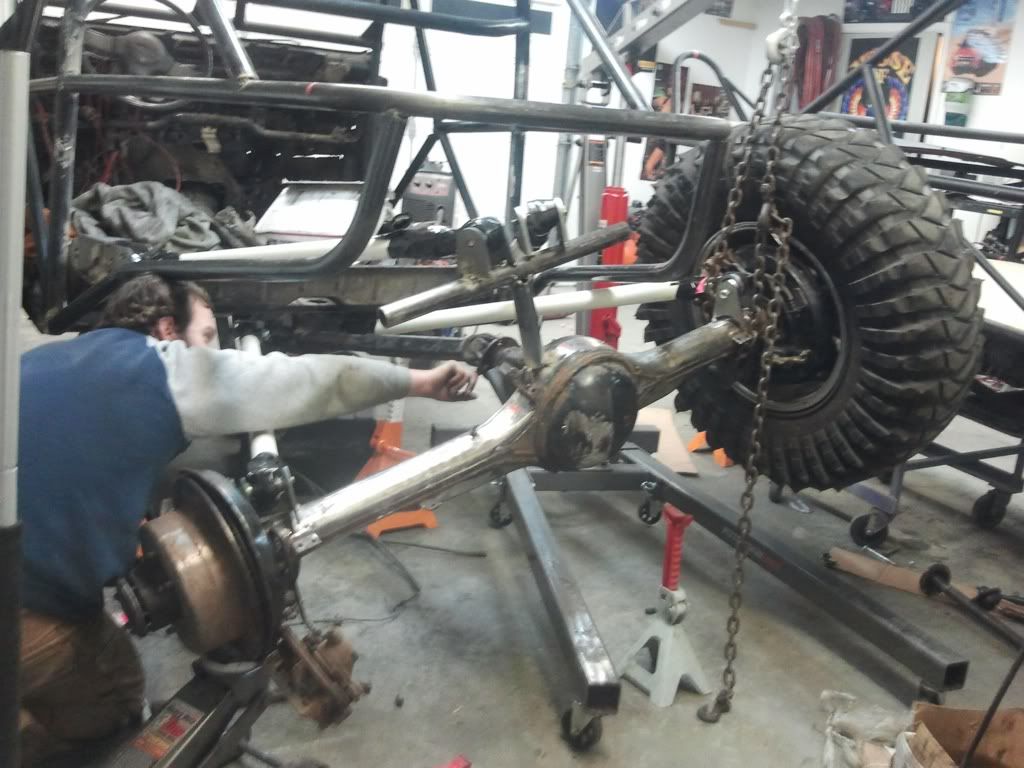NO, don't make them equal/parallel. Your rear suspension would squat really bad. Desert racers can get away this much squat, but a crawler will have a hard time getting grip.
1. axle separation looks ok. between 10-12" with 40's will work. You will get a little more roll understeer with 12" and it raises your roll axis a bit. If your going for super flexy you may want to go with 10" separation.
2. link separation at frame basically determines the squat characteristics. Equal separation basically gives you no anti squat, and as you move the front of the links closer together you will add anti squat. What to shoot for is largely up to what you want out of your buggy. The front upper link mounts are where I would build in some adjustability. If you give yourself 3 or 4 mounting points you will be able to dial in the squat charachteristics you want, many times you don't really figure out what you want until after the build is complete. I personally don't like rigs with tons of anti squat, so for me I would put my adjustable holes at equal on the highest and 3-4 inches down on the lowest. With your link lengths that will give a pretty wide range of adjustments.
3. upper link length. It seems that around 70% keeps your anti squat equal throughout vertical travel, this is why you see this # talked about so much. Yes, it does induce some pinion angle change. That is the trade off for correct suspension geometry. Many desert/go fast link setups use a length that has the anti squat lessen as the suspension droops out and then get greater as it aproaches full bump. This gives a certain amount of "bump stop" built into the system.
4. lower link angle. you want the virtual point that the upper/lower links make to be around the center of gravity. Having the lower links angle up a bit will help raise this point up where it needs to be. If the lowers are parallel to the ground this point ends up being quite low.
I think that your basically on the right path with your first plan. I would go with around 10"-11" separation at the axle. I would make adjustable mounts for the upper frame with 10"-6" of separation, so you can dial in the antisquat at a later date. I would mount the lower links even with the axle and let them angle up so that the point created by the uppers and lowers is around the center of gravity. I would try and shoot for making this point at the area around the front bumper. The adjustable front upper link mounts allows you to move this point forward and backwards, testing will show what works best with your rig.
At some point you just have to burn it in and see how it works out!
I'll have to disagree with part of this post--plus, you're kinda contradicting yourself at times.
Parallel links will not make the rig squat. What it will do is have a low ANTI squat number, meaning the suspension won't resist squatting under power. If you had more separation at the frame than the axle, then it would CAUSE it to squat. Low anti-squat numbers work well on crawlers especially, since they won't change how your axle gets traction in loose or variable traction areas. (higher anti-squat can cause a rig to start hopping if it gains/loses traction)
Shorter upper links are what make the anti-squat numbers raise as the suspension compresses, and lessen as it extends.
None of these things will affect greatly how much the rig will squat or not, since he's not going to have tons of power. Traction and predicability is all he'll need to worry about. Drag racers need to dial in their anti-squat to get the greatest grip possible...that just doesn't work the same way on a crawler.
Flat/level links are ideal, in my opinion. Having a convergence point around the center of gravity will end up with quite a bit of anti-squat, and most likely too much roll-steer.
I'll agree with building in adjustability, and tuning it to the driver's wishes. There are too many variables to say there is only one way to build anything.

